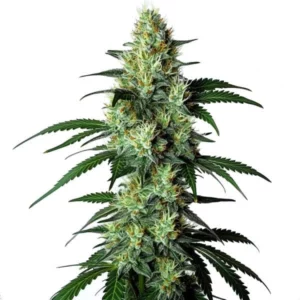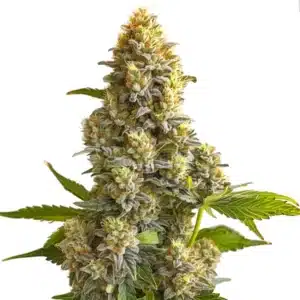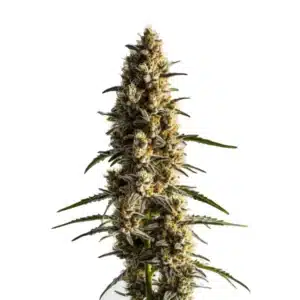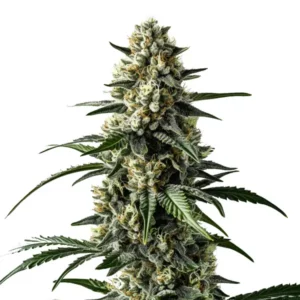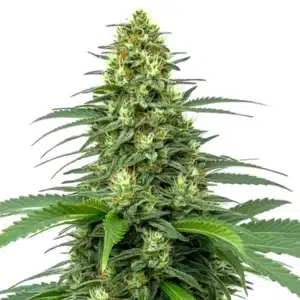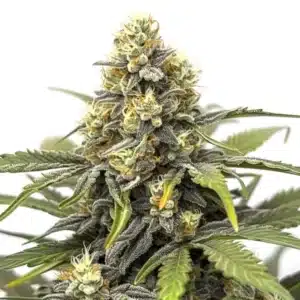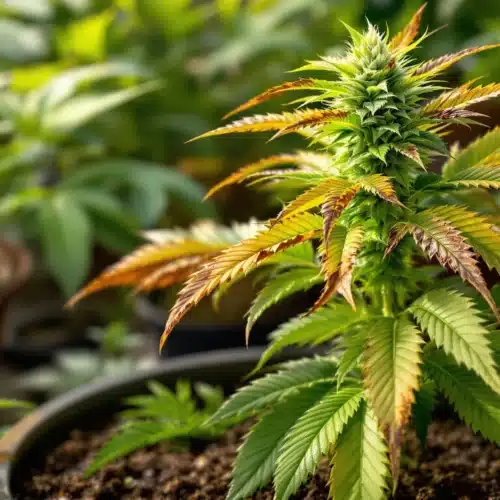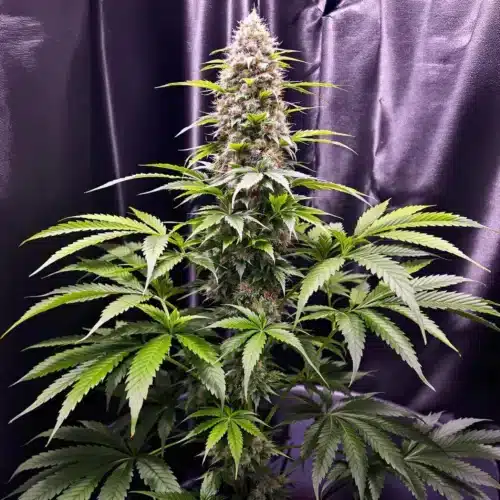
How Cannabis Reacts to Heat Stress
Heat stress can cause significant issues for cannabis plants. When temperatures rise, cannabis plants struggle to maintain their growth and health. This is because high temperatures can disrupt the plant’s natural processes, leading to potential damage. Knowing how cannabis reacts to heat stress is essential for both novice and seasoned growers.
Heat stress symptoms in cannabis include drooping leaves, curling tips, and burnt edges. These signs indicate the plant is under duress, struggling to cope with the heat. Preventing these symptoms is key to maintaining a healthy crop. By knowing the effects of heat stress on cannabis growth and yield, growers can take proactive steps to protect their plants.
Recommended Strains
CBD Mango (1:1)
 THC: 6% - 8%
THC: 6% - 8% Type of seed: CBD
Type of seed: CBD Phenotype: Mostly Sativa
Phenotype: Mostly Sativa Day to flower: 10 - 12 weeks
Day to flower: 10 - 12 weeks
Critical x Somango
 THC: 16% - 20%
THC: 16% - 20% Type of seed: Feminized
Type of seed: Feminized Phenotype: Mostly Indica
Phenotype: Mostly Indica Day to flower: 8 - 10 weeks
Day to flower: 8 - 10 weeks
It’s important to manage high temperatures in cannabis cultivation effectively. Using methods like shade cloths, proper ventilation, and strategic watering can help. These techniques ensure that the plants remain healthy, even in hot conditions. Let’s delve into how cannabis plants respond to heat stress conditions and explore ways to mitigate these effects.
Cannabis Heat Stress Symptoms and Prevention Techniques
Cannabis plants show several symptoms when they are experiencing heat stress. Early detection is vital to prevent long-term damage. Common indicators include wilting, leaf discoloration, and slowed growth. Addressing these signs promptly can save your plants from severe harm.
Prevention techniques are crucial for maintaining plant health. Implementing shade solutions can reduce direct sunlight exposure, lowering leaf temperature. Additionally, increasing air circulation with fans or ventilation systems can significantly help. These methods are part of best practices for mitigating heat stress in marijuana plants.
Knowing how cannabis plants respond to heat stress conditions can guide growers in implementing effective strategies. Regular monitoring of temperature and humidity levels is essential to detect early signs of stress. Growers can use digital sensors to track environmental conditions and adjust as needed.
Furthermore, selecting soil with good drainage properties can aid in preventing heat stress. Well-drained soil prevents waterlogging, ensuring that roots receive enough oxygen even during high temperatures. This helps in reducing the adverse effects of heat stress on cannabis growth and yield.
Managing High Temperatures in Cannabis Cultivation
Managing temperature effectively is a game-changer for cannabis growers. During hot periods, it’s essential to monitor the grow environment closely. Temperature spikes can be detrimental, so staying vigilant helps in taking timely measures. Adjusting the growing environment can often prevent damage before it occurs.
Ventilation plays a critical role in maintaining a stable temperature. Proper airflow ensures that heat does not build up excessively around the plants. Fans, exhaust systems, and natural ventilation can work wonders in managing high temperatures. This approach helps in keeping the plants comfortable and thriving.
Incorporating technology such as automated climate control systems can greatly enhance the ability to manage high temperatures in cannabis cultivation. These systems can regulate temperature and humidity automatically, reducing the burden on growers to manually adjust settings.
Moreover, employing reflective surfaces inside the grow area can help in dissipating heat. Materials like reflective films or white paint can reflect excessive light and heat away from plants, maintaining a cooler environment and preventing the escalation of heat stress symptoms.
Effective Strains for Heat Stress Conditions
Choosing the right strain can make a difference in how cannabis reacts to heat stress. Some strains are more resilient and can withstand higher temperatures. These strains are ideal for growers dealing with hot climates. At Blimburn Seeds, you’ll find several strains suited for such conditions.
The Mango strain is known for its ability to thrive in warmer environments. Its robust nature allows it to handle heat stress with relative ease. Growers in hotter regions often choose Mango for its resilience and fruity yield.
Researching the genetic background of cannabis strains can provide insights into their heat tolerance. Strains bred from regions with naturally high temperatures tend to perform better under heat stress conditions, offering growers a reliable option for cultivation in hot climates.
Additionally, experimenting with hybrid strains that combine both heat tolerance and high yield potential can be beneficial. These hybrids are designed to withstand the effects of heat stress on cannabis growth and yield while still producing quality harvests.
Promos & Deals
Best Practices for Mitigating Heat Stress
Applying best practices can greatly reduce the impact of heat stress on cannabis plants. Consistent monitoring of environmental conditions is a fundamental step. It allows growers to take immediate action when temperatures begin to rise.
Using reflective materials can deflect excess light and heat away from the plants. This technique helps maintain a cooler environment, reducing stress on the plants. Additionally, adjusting light schedules can prevent overheating during the hottest parts of the day.
Implementing a comprehensive watering strategy is also part of best practices for mitigating heat stress in marijuana plants. Ensuring that plants are watered adequately during cooler times of the day helps maintain hydration without contributing to evaporation losses.
Moreover, collaborating with other growers to share knowledge and experiences can lead to improved heat stress management. Community forums and social media groups can be valuable resources for learning and applying new techniques to protect plants from high temperatures.
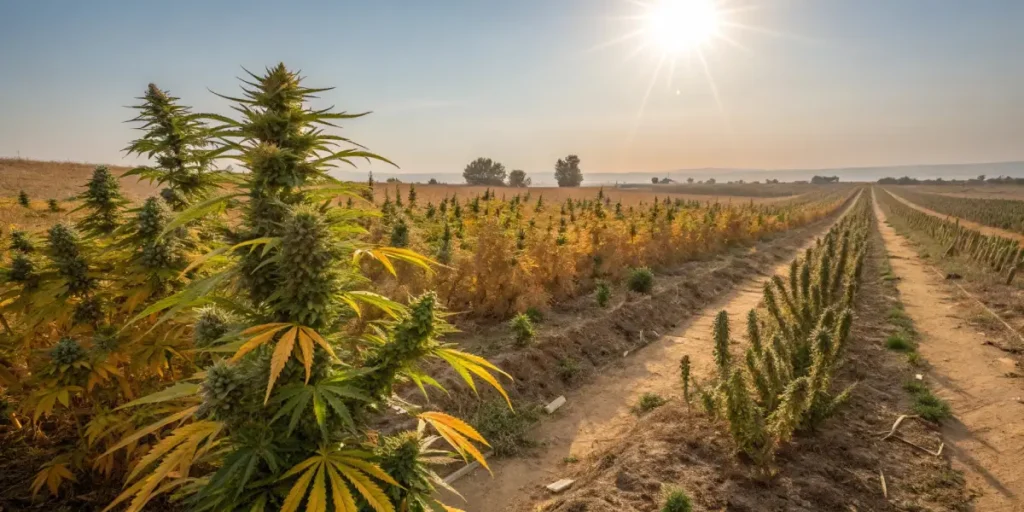
Practical Examples for Real-Life Application
Real-life application of these techniques can be seen in many successful cannabis grow operations. For instance, some growers have implemented automated systems to control temperature and humidity. These systems provide real-time data, enabling immediate adjustments to maintain optimal conditions.
Another example is the use of companion planting. By planting heat-tolerant species alongside cannabis, growers create a microclimate that can buffer against extreme temperatures. This method not only protects cannabis plants but also promotes biodiversity in the grow area.
Incorporating greenhouses with retractable roofs is another practical example. This allows growers to control the amount of sunlight and ventilation their plants receive, effectively managing how cannabis plants respond to heat stress conditions.
Furthermore, using natural shades, such as strategically placed trees or tall plants, can offer additional protection from direct sunlight, helping to keep the grow area cooler and mitigate the effects of heat stress on cannabis growth and yield.
FAQs of how cannabis reacts to heat stress
What are the main symptoms of heat stress in cannabis?
The main symptoms of heat stress in cannabis include drooping leaves, curled leaf tips, and scorched edges. These signs indicate that the plant is struggling to cope with high temperatures. If left unaddressed, these symptoms can lead to reduced growth and lower yields.
Besides to visual symptoms, plants may also show stunted growth and reduced bud development. These are critical indicators that the plant is under stress. Timely intervention with cooling strategies can help alleviate these symptoms and promote recovery.
Knowing cannabis heat stress symptoms and prevention techniques is crucial for growers aiming to maintain healthy plants. Consistently observing plant leaves and growth patterns can offer early warning signs of stress, allowing for rapid response.
Moreover, heat stress can affect the plant’s ability to absorb nutrients, leading to deficiencies that compound the stress. Addressing nutrient uptake issues alongside temperature management can help restore plant health more effectively.
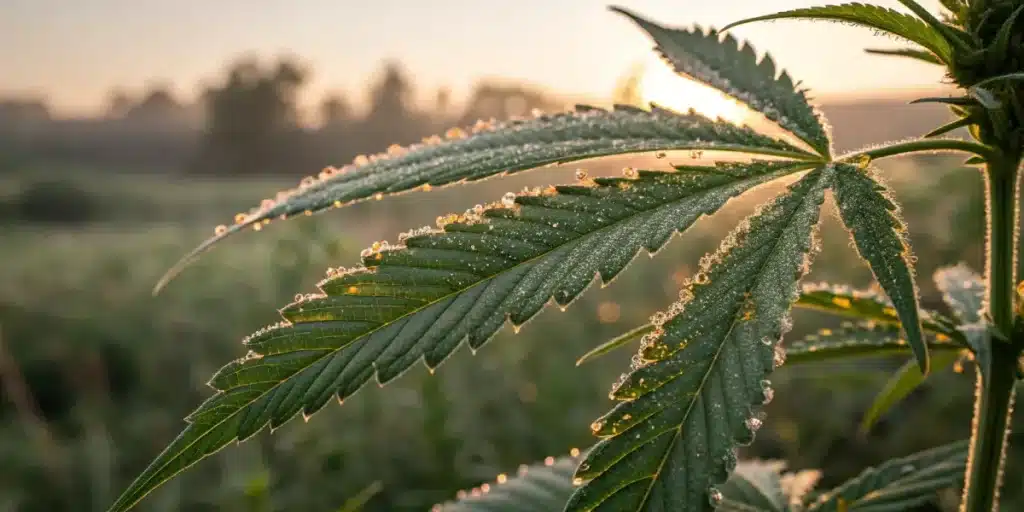
How can I prevent heat stress in my cannabis plants?
Preventing heat stress involves a combination of techniques. Providing shade is one of the most effective methods, as it reduces direct sun exposure. Using shade cloths or positioning your plants strategically can help in cooling them down.
Increasing airflow is another crucial step. Fans and exhaust systems help dissipate heat, maintaining a stable environment. Coupling these with proper watering schedules ensures that plants remain hydrated and less vulnerable to heat stress.
To further prevent heat stress, consider implementing a layered approach that combines shading, ventilation, and hydration strategies. This holistic method provides multiple layers of protection against high temperatures.
Additionally, regularly calibrating and servicing climate control equipment ensures that it functions optimally, reducing the risk of equipment failure during critical periods of heat exposure.
Are there specific strains that handle heat better?
Yes, certain strains are more resilient to heat stress. Strains like Mango, Gelato, and Amnesia from Blimburn Seeds are known for their robustness in warmer climates. These strains have genetic traits that allow them to withstand higher temperatures.
Opting for heat-tolerant strains can make a significant difference in the success of your grow operation. These plants are bred for resilience, offering higher yields and better growth in challenging conditions.
Exploring the genetic lineage of these strains can provide insights into their heat tolerance capabilities. Strains with genetics from equatorial regions often have natural adaptations to handle heat stress effectively.
Furthermore, experimenting with cross-breeding heat-tolerant strains may yield new hybrids that are even more capable of thriving in high-temperature environments, expanding the options for growers facing heat challenges.
What role does ventilation play in managing heat stress?
Ventilation is critical in managing heat stress for cannabis plants. Proper airflow prevents heat buildup, creating a more favorable environment for growth. It helps in maintaining a consistent temperature, which is vital for plant health.
Using a combination of fans, exhaust systems, and natural ventilation can greatly reduce the risk of heat stress. These tools help in circulating air, preventing stagnant hot zones that can harm your plants.
Besides to regulating temperature, effective ventilation aids in controlling humidity levels, which is another factor that influences how cannabis reacts to heat stress. Balanced humidity reduces plant transpiration rates, relieving some pressure from heat stress.
Implementing variable speed fans can offer additional control over airflow, allowing growers to adjust ventilation based on current temperature and humidity conditions, optimizing the grow environment continually.
Can watering techniques impact heat stress levels?
Yes, watering techniques significantly impact how cannabis reacts to heat stress. Watering during cooler parts of the day minimizes evaporation, ensuring that plants receive adequate moisture. This practice helps in maintaining plant hydration.
Additionally, using mulch can help retain soil moisture, providing an extra buffer against heat. This simple technique can reduce the stress on plants, promoting healthier growth even in high temperatures.
Employing drip irrigation systems can further enhance water efficiency, delivering moisture directly to the root zone and reducing surface evaporation. This method ensures consistent hydration during peak heat periods.
Moreover, monitoring soil moisture levels with sensors can prevent over or under-watering, maintaining optimal conditions for plant health and minimizing the adverse effects of heat stress.




